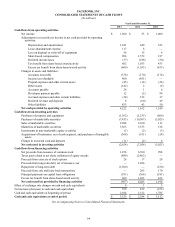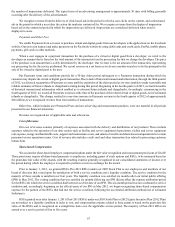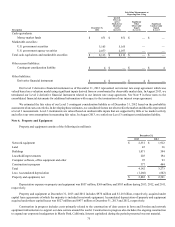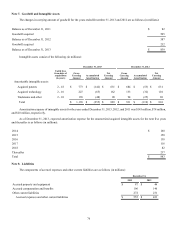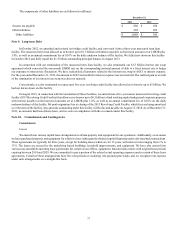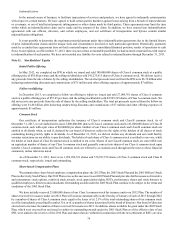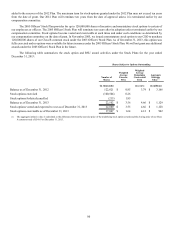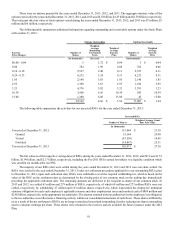Facebook 2013 Annual Report Download - page 74
Download and view the complete annual report
Please find page 74 of the 2013 Facebook annual report below. You can navigate through the pages in the report by either clicking on the pages listed below, or by using the keyword search tool below to find specific information within the annual report.
72
The following table summarizes the allocation of estimated fair values of the net assets acquired during the year ended December 31,
2013, including the related estimated useful lives, where applicable:
(in millions) Useful lives (in
years)
Amortizable intangible assets:
Acquired technology $ 94 3 - 7
Tradename and other 41 2 - 10
Net liabilities assumed (3)
Deferred tax liabilities (21)
Net assets acquired $ 111
Goodwill 252
Total fair value considerations $ 363
Goodwill generated from all business acquisitions completed during the year ended December 31, 2013 is primarily attributable
to expected synergies from future growth and potential monetization opportunities and $130 million of this goodwill is deductible for
tax purposes.
During the year ended December 31, 2013, we also acquired $92 million of patents and other intangible assets. Patents acquired
during the year ended December 31, 2013 have estimated useful lives ranging from six to 15 years from the dates of acquisition.
Note 3. Earnings per Share
We compute earnings per share (EPS) of Class A and Class B common stock using the two-class method required for participating
securities. Prior to the date of our IPO in May 2012, we considered all series of our convertible preferred stock to be participating securities
due to their non-cumulative dividend rights. Immediately after the completion of our IPO, all outstanding shares of convertible preferred
stock converted to Class B common stock. Additionally, we consider restricted stock awards to be participating securities because holders
of such shares have non-forfeitable dividend rights in the event of our declaration of a dividend for common shares.
Undistributed earnings allocated to these participating securities are subtracted from net income in determining net income
attributable to common stockholders. Basic EPS is computed by dividing net income attributable to common stockholders by the weighted-
average number of shares of our Class A and Class B common stock outstanding, adjusted for outstanding shares that are subject to
repurchase.
For the calculation of diluted EPS, net income attributable to common stockholders for basic EPS is adjusted by the effect of
dilutive securities, including awards under our equity compensation plans. In addition, the computation of the diluted EPS of Class A
common stock assumes the conversion from Class B common stock, while the diluted EPS of Class B common stock does not assume
the conversion of those shares to Class A common stock. Diluted EPS attributable to common stockholders is computed by dividing the
resulting net income attributable to common stockholders by the weighted-average number of fully diluted common shares outstanding.
Dilutive securities in our diluted EPS calculation for the year ended December 31, 2011 do not include Pre-2011 RSUs. Vesting
of these RSUs is dependent upon the satisfaction of both a service condition and a liquidity condition. The liquidity condition is satisfied
upon the occurrence of a qualifying event, defined as a change of control transaction or six months following the completion of our IPO.
Our IPO did not occur until May 2012. Therefore, prior to this date the holders of these RSUs had no rights in our undistributed earnings
and accordingly, they are excluded from the effect of basic and dilutive securities. However, subsequent to the completion of our IPO in
May 2012, these RSUs are included in our basic and diluted EPS calculation. Post-2011 RSUs are not subject to a liquidity condition in
order to vest, and are thus included in the calculation of diluted EPS.
We also excluded 1 million, 15 million, and 3 million Post-2011 RSUs for the years ended December 31, 2013, 2012, and 2011,
respectively, because the impact would be anti-dilutive.
Basic and diluted EPS are the same for each class of common stock because they are entitled to the same liquidation and dividend
rights.




